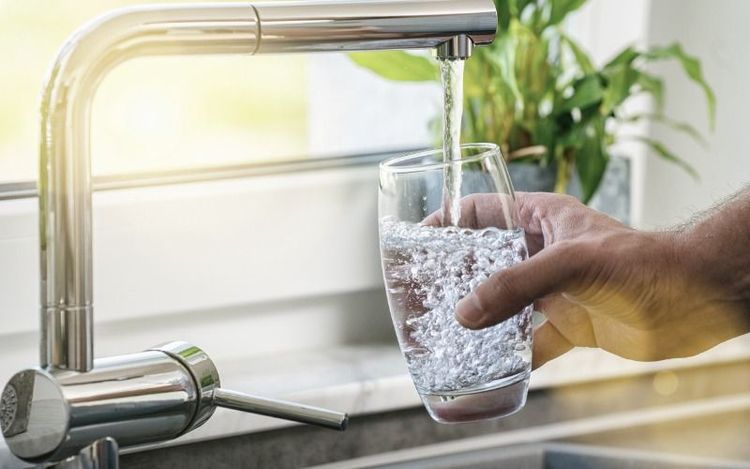Every corner of our home holds cleaning products we rely on to keep our spaces fresh, hygienic, and spotless. On the surface, these products promise glowing results, offering solutions for grease, grime, and bacteria. But have you ever stopped to wonder what’s in these multi-surface sprays, bathroom disinfectants, and air fresheners? The truth is, many household cleaning products contain hidden chemicals that might not just harm what they clean but also compromise our health and environment. Understanding the complexities of these products might make you rethink what you're bringing into your home.
Identifying Common Toxic Chemicals
Household cleaning products often contain a cocktail of chemicals designed for maximum efficacy. However, some of these ingredients can be surprisingly hazardous. For example, ammonia, found in many glass cleaners, can cause respiratory irritation. Bleach, a common disinfectant, produces fumes that can lead to coughing or headaches. Formaldehyde, used as a preservative in some detergents, is a known carcinogen. Then there are synthetic fragrances, which seem harmless but often contain phthalates, compounds linked to hormone disruption. Without transparency from manufacturers, it can be challenging to identify what’s truly safe.
Health Impacts
The health risks from toxic cleaning products can range from mild to severe, depending on exposure. Short-term effects such as skin irritation, headaches, or respiratory issues are well documented, especially for those with conditions like asthma or allergies. Over time, the dangers grow graver; prolonged inhalation of volatile organic compounds (VOCs) emitted by these chemicals can increase the risk of chronic respiratory diseases or even cancer. Research also suggests that hormone-disrupting chemicals like phthalates and parabens found in certain products can impair reproductive health and developmental processes. Vulnerable groups, such as children and pets, face increased risks due to their proximity to the ground and increased exposure to residues.
Safer Alternatives
Thankfully, you don’t need harsh chemicals to achieve a clean home. An increasing number of brands now produce cleaning products that rely on plant-based ingredients or biodegradable formulas. Look for certifications such as EPA’s Safer Choice or Green Seal to determine the safety of a product. These options eschew harsh chemicals and opt for components like baking soda, citric acid, or surfactants derived from plants. While these alternatives may sometimes require a little extra elbow grease, they’re a step forward in ensuring a toxin-free environment for your household.
DIY Cleaning Recipes
One of the simplest ways to reduce your exposure to harmful chemicals is by creating your own cleaning solutions. DIY recipes often involve common kitchen ingredients that are safe, effective, and inexpensive. For instance, a mixture of white vinegar and water works wonders as a glass cleaner, cutting through smudges without toxic fumes. Baking soda can be used to scrub surfaces and deodorize carpets. Essential oils like tea tree or eucalyptus add a pleasant fragrance while offering natural antimicrobial properties. Crafting your products also allows for customization—tailored to your preferences, all while keeping your home safe.
Reading Labels
Understanding product labels is an essential step toward safer cleaning practices. Unfortunately, manufacturers aren’t required to disclose all ingredients on their packaging, meaning potentially toxic chemicals may go unlisted. However, look for phrases like “non-toxic,” “biodegradable,” or “phosphate-free.” Beware of vague claims such as “natural” without proper certifications—these can be misleading. Familiarize yourself with certain terms like “VOCs” and “artificial fragrances,” which may indicate potential risks. The more educated you are about what’s in your cleaning products, the better equipped you’ll be to make smarter choices in the store aisle.
Regulatory Oversight
One of the most concerning issues in the world of household cleaning products is the lack of stringent regulatory oversight. While many people assume products on store shelves are safe, that’s not always the case. The United States, for example, lacks comprehensive legislation dictating what companies must disclose about their products. Agencies like the Environmental Protection Agency (EPA) do provide guidelines; however, loopholes allow certain harmful chemicals to bypass scrutiny. This limited oversight means that consumers must often take matters into their own hands in researching safety and advocating for cleaner industry standards.
Environmental Impact
Cleaning products don't just impact our health but also our environment. Once washed down the drain, many toxic chemicals find their way into water systems, where they can wreak havoc on aquatic life. Phosphates, often used in detergents, cause algal blooms that deplete oxygen in water, harming fish and other organisms. Non-biodegradable compounds can persist in ecosystems, contaminating soil and waterways for years. Packaging waste also adds to the issue, with many products sold in non-recyclable plastic bottles. Choosing eco-friendly products or refilling containers can help lessen your environmental footprint.
Making Informed Choices
Ultimately, creating a safer home starts with making informed decisions about the products you bring into it. Start by researching brands committed to transparency and environmentally conscious practices. Whenever possible, opt for multi-purpose cleaners to reduce the variety of products you use. Engage with online communities or forums that evaluate cleaning products for safety and efficacy, and consult professional resources for reliable information on lesser-known ingredients. By prioritizing your health, safety, and the planet, you’ll be taking a meaningful step in the right direction.
Small Changes, Big Results
Switching to safer, non-toxic cleaning practices may seem daunting at first, but small adjustments can make significant impacts over time. Thank yourself for taking this thoughtful approach to health and the environment every time you pick up a new cleaner or mix a simple DIY solution. Ultimately, a healthier home begins with awareness, choice, and action—a combination well within your reach.




